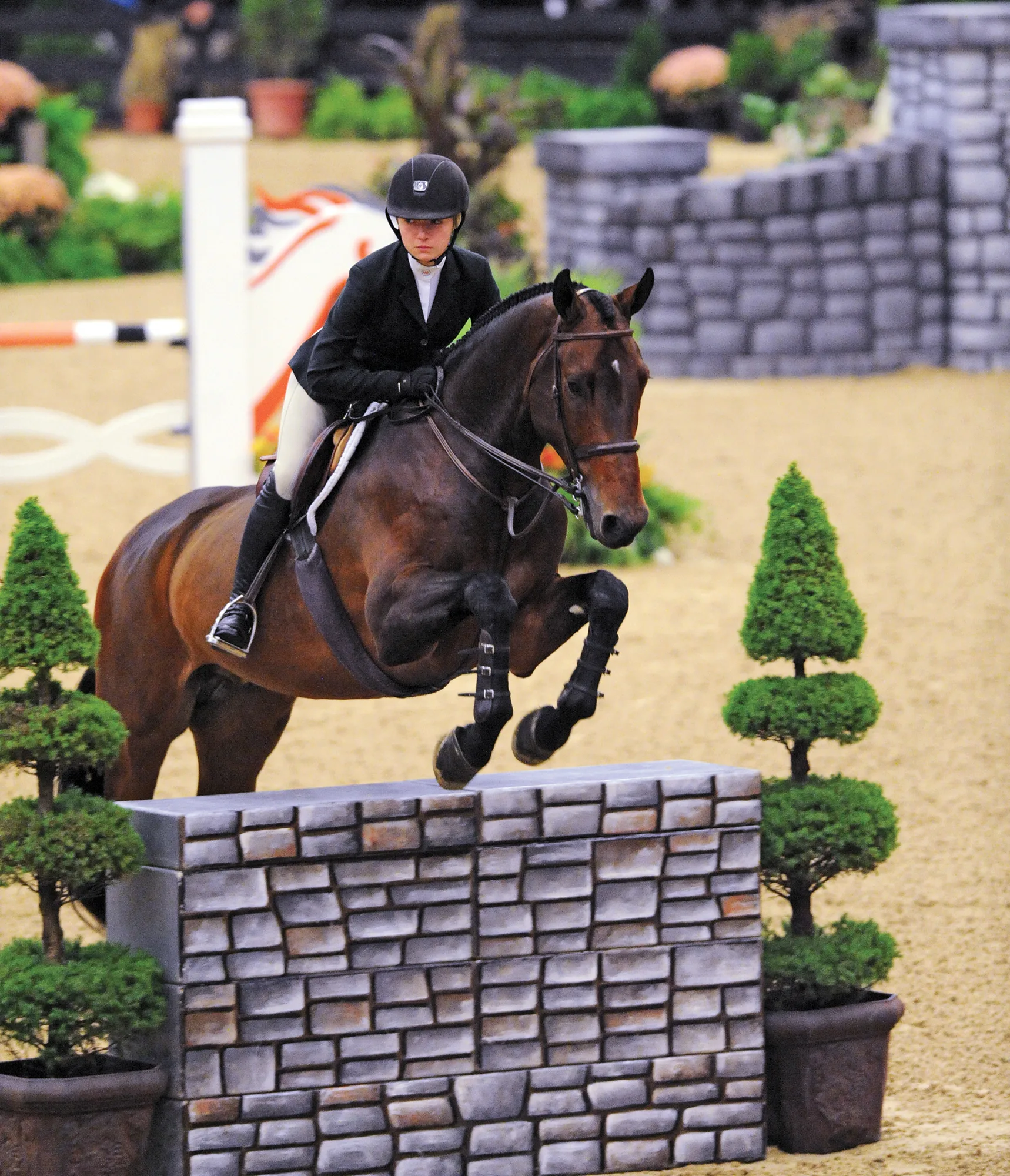When show jumper Lillie Keenan was named the jumper with the best style at the end of her successful week at CHIO Aachen, held June 27-July 6 in Aachen, Germany, it was far from the first time the New York City-based rider has been recognized for her exemplary equitation. In 2013, Keenan became the 16th person in history to win both the USEF Medal and ASPCA Maclay Finals in the same year. This week, we’re looking back at the second of those equitation championships win, with excerpts from a story published in the Nov. 18 & 25, 2013, edition of the Chronicle.

It’s ironic that we illustrate coverage of equitation finals like the ASPCA Maclay with still photos at a certain point over the jump. What makes or breaks an equitation rider isn’t what happens in the air, but on the flat in between the jumps.
By the time they qualify for an equitation final, most riders have a basically solid position in the air over a fence. One can argue minute details, such as how far a rider’s heels are down, or which release she uses. But in the end, it’s the totality of the ride that’s important—the precise control the rider has over the pace and track and her command of her horse’s stride.
Robert Ridland, who judged the Maclay Finals on Nov. 3 in Lexington, Kentucky, alongside Susie Humes, emphasized the importance of what went on in between the jumps. “When we boil things down to basics, it’s all about controlling the horse—lengthening and shortening the strides and directional accuracy,” Ridland said.
“All the tests that we asked on the course were basically that. The No. 1 thing we were trying to test was basically being able to control your horse, forward and back, with lateral movements. And Lillie [Keenan] did it the best,” Ridland continued.
Keenan, 17, put herself into contention over the Round 1 course with a fluid ride aboard Clearway. “If I had to pick her round apart, she was too deep to the first jump, and the horse stuttered a hair at the second, but the rest I thought was textbook,” said Andre Dignelli, who trains Keenan along with his Heritage Farm team.
Humes and Ridland put Keenan into third after the first round of jumping, but her work in the flat phase inspired them to move her into the lead.
ADVERTISEMENT
“Lillie’s flat was really phenomenal,” Humes said.
Then, just as she had in the Pessoa/USEF Medal Final three weeks before, Keenan definitively showed herself as the winner in the second over fences round. The Round 2 course called for cantering into a four-stride line, transitioning to trot in the line and trotting the second jump, a counter-canter turn across the ring, and a one-stride combination of wingless 6′ wide wall jumps. Keenan was flawless.
“I thought the round was stunning—it was polished, it was relaxed, it was everything that you work for,” Dignelli said.
Watch Keenan’s winning rounds in the 2013 ASPCA Maclay Final, courtesy of USEF Network:
Humes and Ridland made the unusual call of pinning the class with no additional testing. “The class did pin itself after the second round. It was not hard to judge. We just wrote down what happened and put it in order. That’s why we did not test one more time,” Humes said.
Also with lovely second-round rides, Kelli Cruciotti and Charlotte Jacobs claimed second and third. Cruciotti moved up from third to second, while Jacobs made a huge leap from 11th to third.
Keenan admitted she wasn’t 100 percent sure of how she’d ride the second-round course until she stepped into the ring.
ADVERTISEMENT
“I think I had an advantage, honestly, being able to watch [the other riders go],” she said. “The course rode differently than how it walked.
“I think that’s the wonderful thing about a challenging course for a championship; it’s very much about going in and starting your course, and being able to negotiate as you go,” she added. “It’s not just about having a plan and thinking that you’re going to execute the whole thing. Obviously, that is what riding is, and you have to react to a situation. I had a very solid plan going in, and I knew that my horse would be able to do any test that they asked. I have to say that I was the most nervous because I didn’t want to get in his way.”
Keenan rode Clearway, a horse owned by Heritage Farm, to her titles.
Last year, he’d been a green 6-year-old when she was second in both the Medal and Maclay Finals.
“He is probably the best horse I have ever had in this division,” said Dignelli. “He’s 17.2 [hands], and he is the most elastic horse I have ever had. He can leave out a stride, he can add a stride, he can trot—I knew he was the right horse for Lillie. When you put the best rider on the best horse, you win both equitation finals.”
This article originally appeared in the Nov. 18 & 25, 2013, issue of The Chronicle of the Horse. You can subscribe and get online access to a digital version and then enjoy a year of The Chronicle of the Horse. If you’re just following COTH online, you’re missing so much great unique content. Each print issue of the Chronicle is full of in-depth competition news, fascinating features, probing looks at issues within the sports of hunter/jumper, eventing and dressage, and stunning photography.














